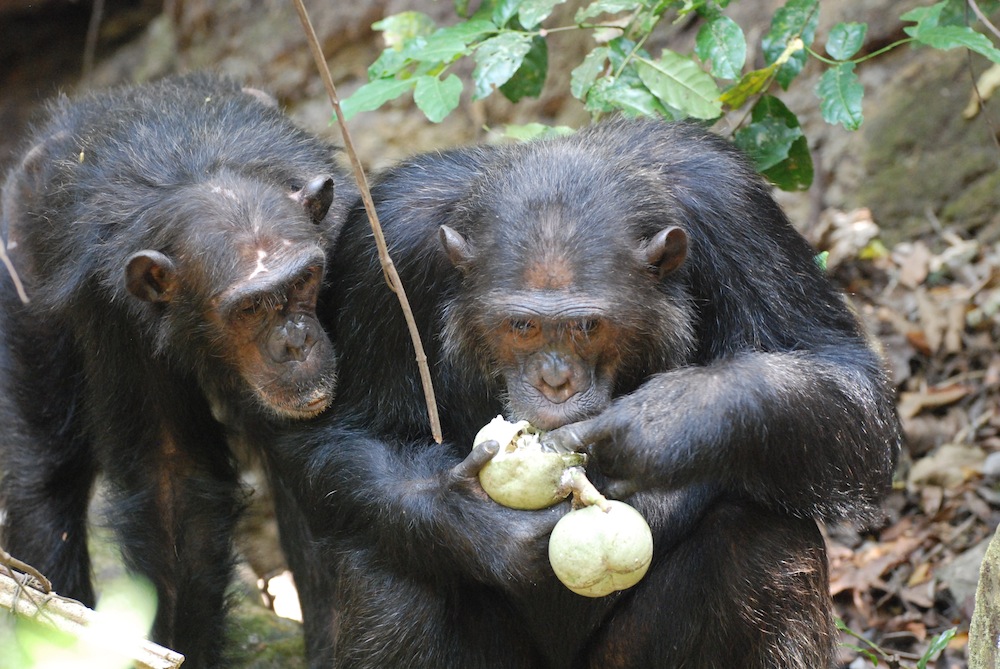Chimp and Human Gut Bacteria Nearly Identical

Humans share about 99 percent of our genomes with chimpanzees. Now, research finds we share something else: gut bacteria.
The bacterial colonies that populate the chimpanzee intestinal tract are mirror images of those found in the human gut, researchers report today (Nov. 13) in the journal Nature Communications. The findings suggest gut bacteria patterns evolved before chimps and humans split and went their evolutionarily separate ways.
Human gut bacteria are crucial to health, with infants relying on healthy microbe populations to influence the developing immune system. Problems with microbe populations may also contribute to obesity and inflammatory bowel diseases.
Three intestinal ecosystems
In 2011, researchers learned that everyone's gut bacteria fall into one of three different types, almost analogous to blood types. In each type, certain bacteria dominate. These types weren't linked to any personal characteristics such as geographic area, age or gender. Researchers dubbed these distinct bacterial ecosystems "enterotypes." ("Entero" means gut or intestine.)
"No one really knows why these three enterotypes exist," said study researcher Andrew Moeller, a doctoral student at Yale University.
Along with his adviser Howard Ochman and their colleagues, Moeller want to understand how these enterotypes arose. They could be distinctly human, he told LiveScience, which would suggest they arose relatively recently, perhaps in response to the development of agriculture. Or they could be ancient, shared among our closest primate relatives.
Sign up for the Live Science daily newsletter now
Get the world’s most fascinating discoveries delivered straight to your inbox.
The researchers analyzed gut bacteria samples from 35 chimpanzees from Gombe Stream National Park in Tanzania. The chimpanzees were all in the subspecies Pan troglodytes schweinfurthii, the eastern chimpanzee, which arose approximately the same time as Homo sapiens.
Shared bacteria
The researchers found that, just like humans, chimps' guts harbor one of three distinct types of bacterial colonies. Even more intriguingly, these enterotypes matched humans' precisely. In type 1, for example, both humans and chimps show a predominance of Bacteroides, Faecalibacterium and Parabacteroides.
There were some differences. For example, in humans and chimps, enterotype 2 is marked by an overabundance of bacteria called Lachnospiraceae. In humans, the bacteria Prevotellae is also prevalent in type 2. In chimps, Prevotellae appears in significant numbers in all three enterotypes, perhaps because it is associated with a high-carbohydrate diet.
Other differences could help explain certain human health issues. By comparing human and chimpanzee gut bacteria, the researchers found many of the bacteria present only in humans are linked to diseases such as inflammatory bowel diseases, conditions that cause pain, diarrhea and vomiting.
Seven of the chimps in the study were tested repeatedly over eight years, and their gut microbes were found to change from type to type over that time period. No one has ever tested humans for changes over a period longer than two weeks, Moeller said, but the results suggest our enterotypes may shift over time, too.
Our shared history
The similarities between chimp and human colonies suggest enterotypes predate our species, which in turn suggests that none of the three ecosystems are better than the others, Moeller said. [Gallery: Tiny, Nasty Bugs That Make Us Sick]
"Before we found this in chimpanzees, there was a possibility that enterotypes were a product of modernization, which could mean they have some negative effects on health," he said. "I don't think there's any reason to think one enterotype is going to have an effect on health that's going to be better" than the others.
Moeller and his colleagues are now examining gorilla fecal samples to find out where they stand as slightly more distant primate relatives to humans.
"The next step is to try to find out the processes and mechanisms responsible for producing these three community states," Moeller said, "which is kind of a lofty goal, but I think more sampling will actually reveal why these communities exist."
Follow Stephanie Pappas on Twitter @sipappas or LiveScience @livescience. We're also on Facebook & Google+.

Stephanie Pappas is a contributing writer for Live Science, covering topics ranging from geoscience to archaeology to the human brain and behavior. She was previously a senior writer for Live Science but is now a freelancer based in Denver, Colorado, and regularly contributes to Scientific American and The Monitor, the monthly magazine of the American Psychological Association. Stephanie received a bachelor's degree in psychology from the University of South Carolina and a graduate certificate in science communication from the University of California, Santa Cruz.









